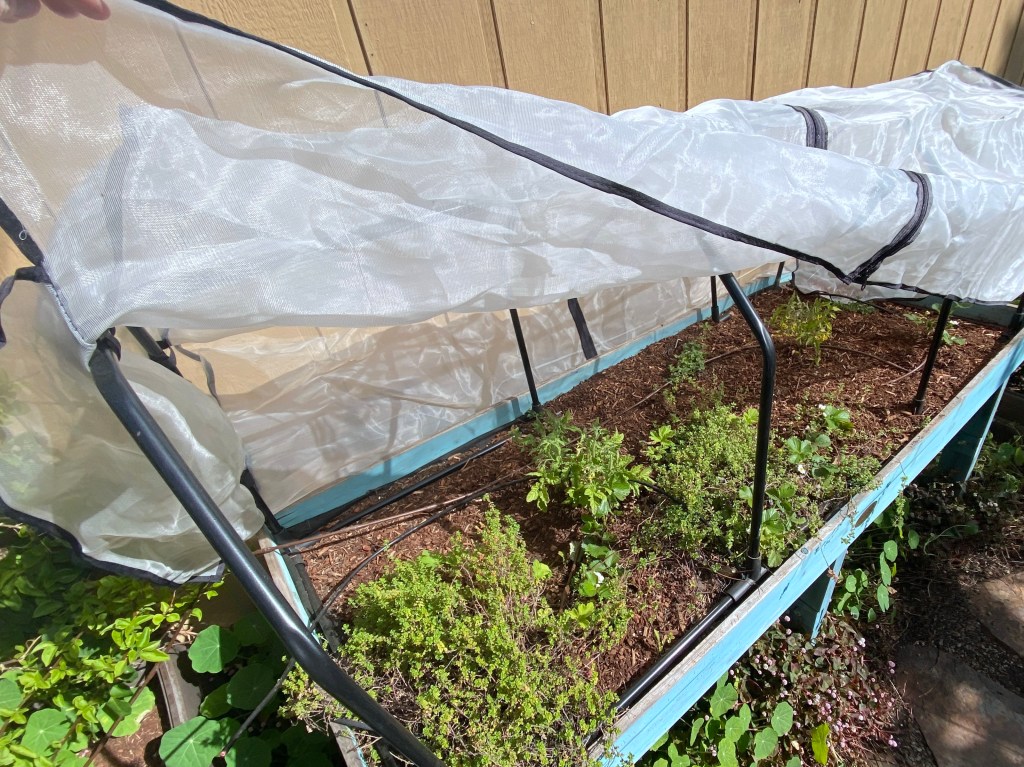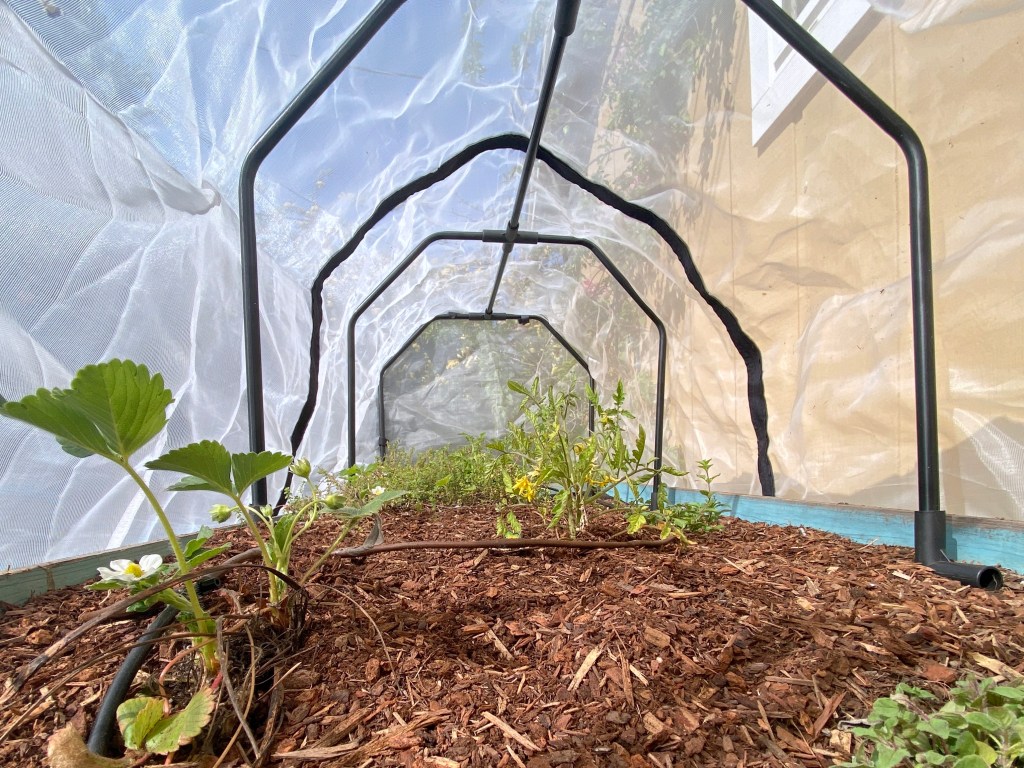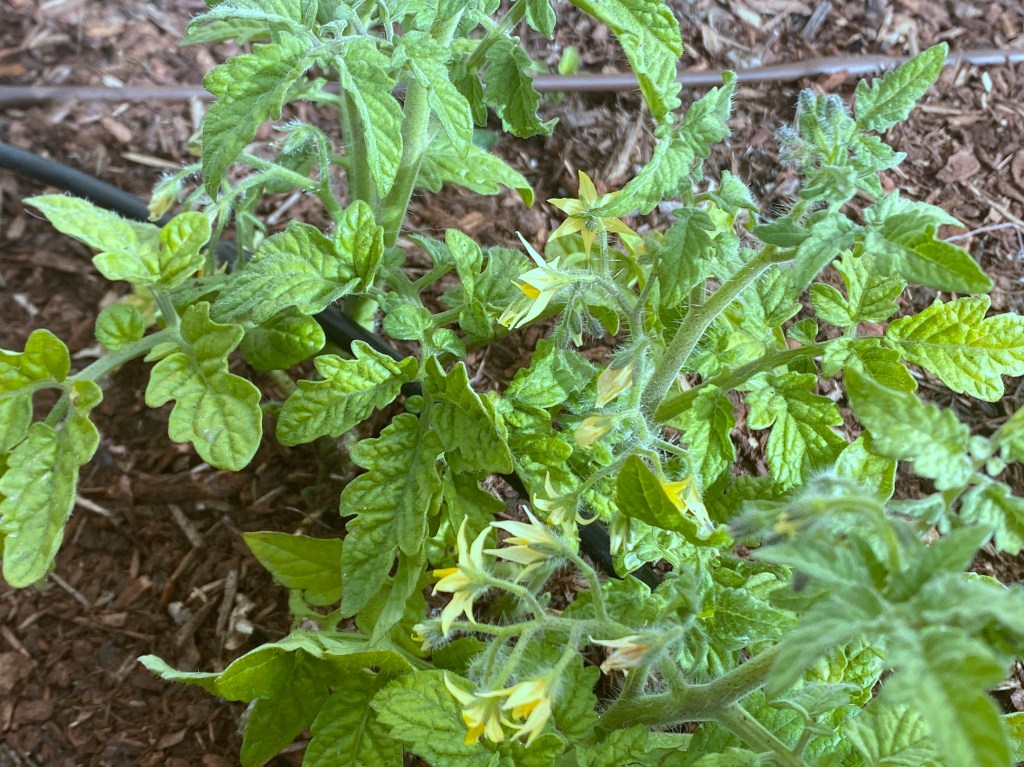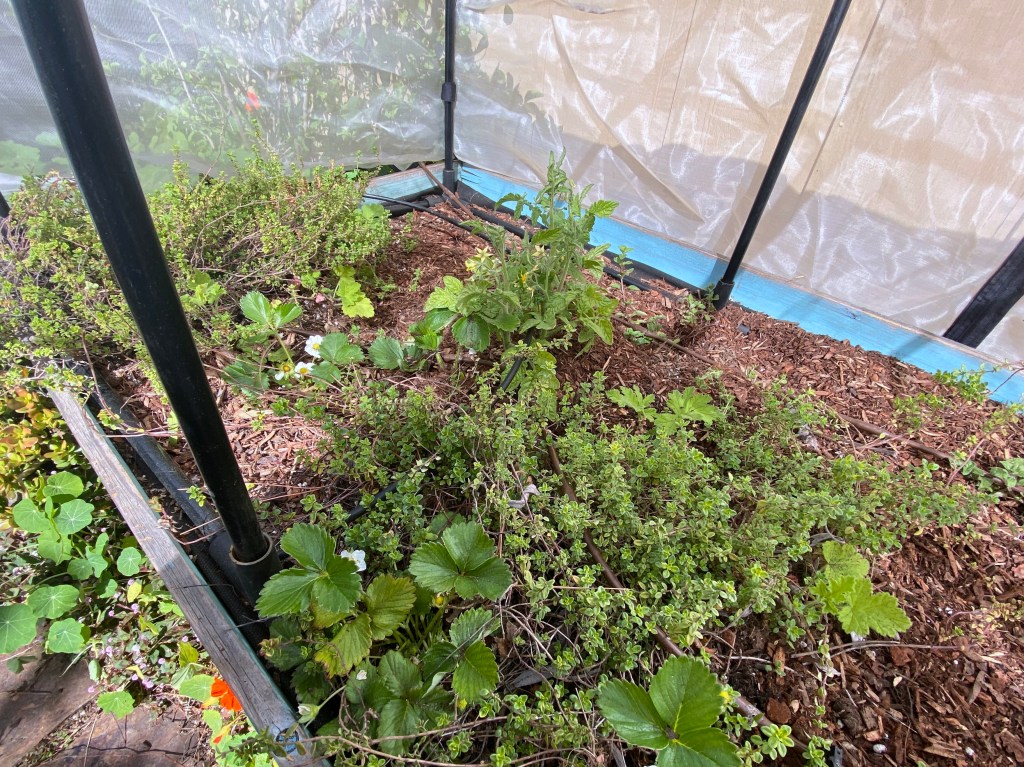Over the years, the arrival of spring usually means one thing: it’s time to plant a summer garden. Last year I skipped the garden entirely. Year four of the drought and mandatory water rationing put the kibosh on a summer garden. Instead of planting tomatoes, I finished sheet mulching the lawn in the back garden and let the rest of the grass die. What a summer, eh? It was disheartening.
This year is different. For starters, the lawn is gone. In its place: native plantings that will thrive throughout our hot, dry summers. Also in place this year is our newly installed rain catchment system. Harvesting rain water for our vegetable garden should see us through at least half the summer if not more. Mike is connecting a drip system to the tank so that we can water judiciously. I’m hoping it will last all summer.
All this is to say that I’m gardening guilt-free this season.
I’ve also nearly doubled my planting space using a space-efficient gardening box called a VegTrug Elevated Garden.
The only practical place for a vegetable garden in our yard is along the back of our house. Unfortunately, that same spot houses an electrical outlet, a low-voltage transformer and an irrigation manifold intake valve.

The “business end” of the garden
All of those unattractive components used to hide behind shrubs. Several years ago we removed the shrubs to make way for a vegetable garden. We added a pair of 4 x 4 elevated beds assembled from a kit, fitting them around the boring but necessary items that are part of the business end of the garden.

Planting Box One: Upper half, transplanted raspberry vines, nasturtiums, lower box, cosmos and nasturtiums

Edible Nasturtium

Planting Box Two: Heirloom tomatoes, three varieties, cosmos and nasturtiums
We added gravel to fill in the odd spaces.
When I grew pumpkins, the gravel provided space for the vines to grow, but otherwise it wasn’t any use for planting.
I spotted the VegTrug in one of my gardening catalogs and inspiration struck. I went out back and measured the distance between the two existing boxes, allowing for the immovable pipe protruding out of the ground.
Oh-my-gosh!!!
The longer of the two Trugs would not only fit, but would have the perfect amount of clearance off the ground and away from the house. I placed the order.
UPS left the box on our front deck while my husband was away on business and my son at school. I couldn’t get it to budge. I opened the box where it sat and carried the pieces through the house and out the back door.
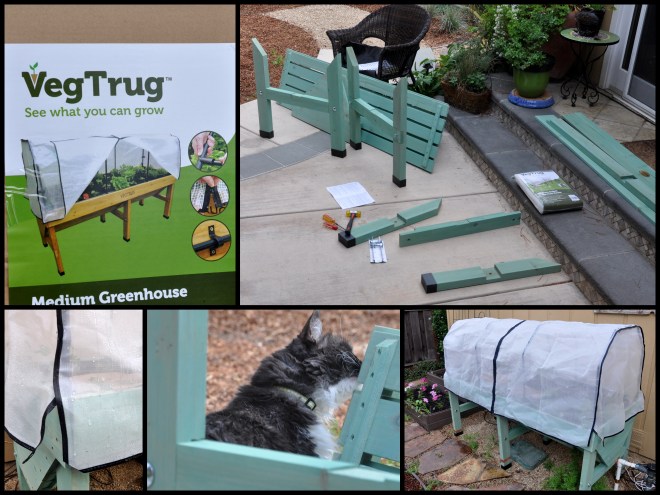
Assembling the VegTrug
I watched a YouTube video ahead of time so I would be able to assemble it (mostly) myself. I sorted the pieces, doubled checked the parts and assembled the legs. No problem. The long planks were a bit unwieldy and they suggested a second person help with that part. In my impatience, I tried to do this on my own, and promptly dropped one of the boards on my little toe. Boy did that hurt. And before you ask, yes the foot with the recent surgery. I felt like a fool.
Later that afternoon, my son helped me with the larger pieces before it started raining. When Mike came back from Brazil at the end of the week, he helped me finish the assembly and move the planter into place.
I have to say, I am in love with this planting box. It’s elevated, making it easy to plant. The inverted triangle means that you use less soil. Deeper rooted plants go in the center where the soil is deep. I planted the shallow rooters along the sides.

Fish-eye view of garden boxes before placing the Veg Trug

Fish-eye view of garden with new VegTrug
It comes with a removable cover to keep the bugs out, while allowing water to flow through. The cover frame breaks apart into smaller pieces for easy storage when it’s not in use. They’ve thought of everything.
Not willing to take any chances, I wrapped the legs with copper tape. Sorry snails, you’ll have to look elsewhere for dinner.
Thanks to tips from Pauline and Sarah, both New Zealand gardeners, I’ve added nasturtiums to the mix this year. I had a vague notion of companion planting, but somehow never researched the pros and cons. I’ve just been lucky most years, other than snails of course, that the pests stayed away. A couple of seasons of nasty squash bugs sent me scrambling for an organic deterrent. Nasturtiums help keep the bad bugs in check.
If all grows well, it will be a summer filled with raspberries and strawberries, three varieties of heirloom tomatoes and delicious sweet basil. The nasturtiums are also edible, but I’ll let them grow and do the job of keeping nasty pests at bay. I planted the lower boxes with one of my new summer favorites. Cosmos grow like weeds, providing cut flowers all summer long.

Newly planted vegetable garden
Soil, tilled.
Soul, tended.
I am one happy gardener.
